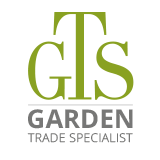Around 16% of all tree work accidents involve working at height according to official government statistics. The due diligence required for this type of work however is applicable to all gardeners, not just tree surgeons and those involved in working at height in trees. Tree surgeons often work at height when they are carrying out the maintenance and management of trees, shrubs, vines and other perennial woody plants. Working at height involves using the correct machinery to do so, therefore, tree surgeons need to be aware of the dangers associated with this machinery and what they must do to remain compliant and safe.
What machinery should you use?
If you’re working at a particularly large height and require specific machinery, consider your options and which would be most appropriate to your task. Articulated boom lifts, otherwise known as cherry pickers,are often used for pruning large trees and have up and over capabilities making them incredibly versatile for this type of maintenance. Scissor liftsprovide you the option of going straight up, so can be limiting with some aspects, but many have a large platform surface for multiple people and/or tools and equipment, and offer the option of outriggers for extra stability and safety compliance.
Dangers of working at height
Predominantly, the dangers from working at height come from the fall and impact this may have, especially on  any key organs or bones. It’s incredibly easy to break a bone and the height doesn’t have to be excessive either. Avoid dangers by staying safe, and stay safe by remaining compliant with current working at height legislation.
any key organs or bones. It’s incredibly easy to break a bone and the height doesn’t have to be excessive either. Avoid dangers by staying safe, and stay safe by remaining compliant with current working at height legislation.
Working at height legislation
The government sets out its guidelines in The Work at Height Regulations 2005 which consists of a series of detailed documentation which sets out the rules for those working at height, regardless of any machinery usage.
How to remain compliant
Ultimately you need to ensure everything is safe and done in a manner that will not harm you or anyone else. This is not as simple as it may first seem. For example, if you are working as a series of contractors or a group of employees, there must be appropriate supervision for the work performed at height.
Risk assessments should be undertaken to understand any potential dangers. For example, when working in gardens assess the risk to neighbours or passers-by, even something as simple as the dog next door could cause a crucial trip hazard. The client should always be made aware of the work being undertaken and the dangers they may be privy to due to the dangers of working at height. All associated people on site should wear the correct safety equipment such as hard hats and footwear to minimise the risk of accidents that may occur.
As an individual who works at height, you need to ensure that you have the correct training and if using powered access machinery, the correct qualifications such as the International Powered Access Federation(IPAF) PAL card. The IPAF PAL card is recognised worldwide across industries as proof of platform operator training to the highest standard and is essential for anyone working at height using powered access machinery such as articulated boom lifts and scissor lifts.
For you to be compliant, your equipment also needs to be regulated. This means regular check-ups and tests on harnesses, machinery and tools before you get up in the air. Don’t let an equipment fault be the reason you are out of work.
Finally, ensure you keep up to date with health and safety regulations in the industry by following approved trainers and government updates, so you are never caught out.
How to be safe working at height?
If you’re working at considerable heights, ensure you use the correct harness and safety equipment. Hard hats are essential, no excuses. Consider the weather of the day, you do not want to be caught out in a rain shower which could cause slipping on a platform for example, let alone the dangers of falling branches and gusts of wind. Another factor to consider when using powered access equipment is your rescue plan. Having a plan in place should the machine power fail is essential, especially if you are working alone. Ensure you have a means of contacting someone to help get you to safety and have a process to follow should a power failure arise.
Ground conditions
Whether you are putting together a risk assessment or not, you should always carefully analyse the ground conditions of where you will be working. With the potential for gravel sliding, or holes in the ground to engulf machinery, it’s key to assess where you will be working before installing any machinery. Consider using a 4x4 cherry picker or scissor lift with outriggers for extra stability if you are working on uneven terrain. Your powered access provider will be able to advise you on the best equipment for the ground conditions you will be working on.
Richard Miller, co-founder and MD of powered access rental company Star Platforms who supply equipment and machinery rental and IPAF training.


 any key organs or bones. It’s incredibly easy to break a bone and the height doesn’t have to be excessive either. Avoid dangers by staying safe, and stay safe by remaining compliant with current working at height legislation.
any key organs or bones. It’s incredibly easy to break a bone and the height doesn’t have to be excessive either. Avoid dangers by staying safe, and stay safe by remaining compliant with current working at height legislation. 